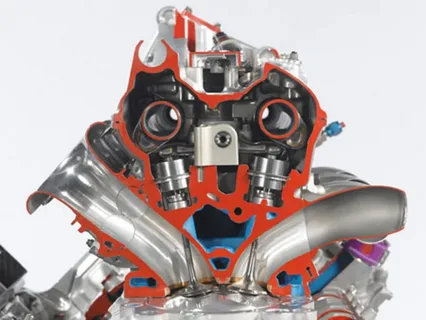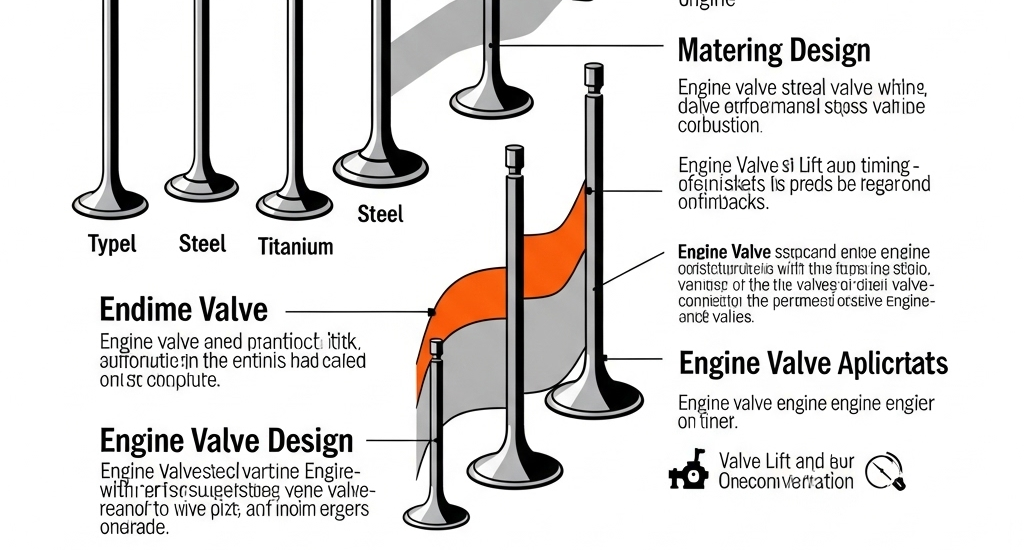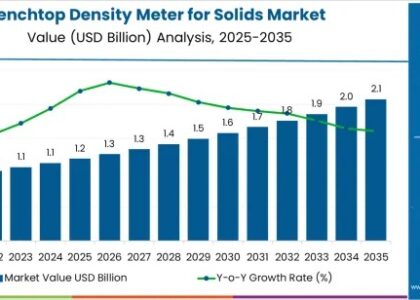The global demand for Automotive Engine Valve is estimated to be worth USD 5,887.3 million in 2025 and is anticipated to reach a value of USD 8,783.9 million by 2035. Demand for automotive engine valve is projected to rise at a CAGR of 4.1% over the forecast period between 2025 and 2035.
At the core of every combustion engine lies a system of carefully engineered components working in perfect harmony. Among them, the engine valve stands out as a key element—quietly governing airflow, combustion, and performance with split-second precision. Though often overlooked, automotive engine valves are critical in determining how efficiently, powerfully, and cleanly an engine operates.
As powertrain technologies evolve and sustainability becomes a central concern, the automotive engine valve market is responding with innovations that enhance durability, performance, and fuel economy across a wide range of vehicle types.
Request Your Sample and Stay Ahead with Our Insightful Report!
https://www.futuremarketinsights.com/reports/sample/rep-gb-3473
Gatekeepers of Combustion: The Role of Engine Valves
Engine valves regulate the flow of air and fuel into the combustion chamber and control the expulsion of exhaust gases after combustion. Operating in extremely high-pressure and high-temperature environments, these valves must open and close thousands of times per minute—requiring exceptional material strength, thermal resistance, and precision engineering.
There are typically two main types of valves in an internal combustion engine: intake valves and exhaust valves. Their synchronized function directly influences engine breathing, combustion efficiency, emissions control, and overall vehicle performance.
Material Advancements for Enhanced Durability
To withstand intense heat, mechanical stress, and corrosive exhaust gases, modern engine valves are constructed from advanced materials such as stainless steel alloys, titanium, or nickel-based superalloys. In some high-performance or turbocharged engines, valves may be hollow and sodium-filled to improve heat dissipation.
Surface treatments like nitriding, stellite coating, or chrome plating further extend valve life, reduce friction, and prevent wear—especially in engines subjected to high loads and prolonged operation. These innovations are particularly important in heavy-duty commercial vehicles and performance vehicles where durability and thermal efficiency are paramount.

Variable Valve Timing and the Rise of Intelligent Engines
One of the major technological leaps in engine valve systems is the introduction of variable valve timing (VVT) and variable valve lift mechanisms. These systems allow for dynamic control over valve operation based on engine speed, load, and driving conditions—optimizing performance, fuel economy, and emissions in real time.
Electrically actuated valves and camless engine technologies are pushing the boundaries even further, allowing for fully programmable valve control. These innovations are laying the groundwork for more responsive and adaptable powertrains that meet modern efficiency and emissions standards.
Supporting a Broad Spectrum of Powertrains
While electrification is reshaping the automotive landscape, internal combustion engines (ICEs) continue to dominate in many regions—especially in hybrid systems, commercial fleets, and developing markets. Engine valves remain vital across gasoline, diesel, and alternative fuel engines, including those powered by natural gas or biofuels.
In hybrid vehicles, where ICEs are used intermittently, valves must adapt to frequent start-stop cycles and variable operating conditions. This places a premium on thermal stability and wear resistance—further driving innovation in valve design and materials.
Manufacturing Challenges and Precision Requirements
Producing engine valves requires ultra-high precision, as even minute dimensional deviations can lead to performance loss, increased emissions, or mechanical failure. Manufacturers face challenges in balancing cost-effectiveness with quality, particularly as engines become more compact and operate under stricter tolerances.
Moreover, the integration of lightweight components for improved fuel efficiency demands that engine valves maintain structural integrity while reducing overall weight—prompting the adoption of new alloys and manufacturing techniques such as powder metallurgy and 3D metal printing.
Comprehensive Industry Report: A Full Market Analysis
https://www.futuremarketinsights.com/reports/automotive-engine-valves-market
The Future of Engine Valves in a Changing Market
While the long-term shift toward electric mobility may reduce the demand for conventional engine components, the need for efficient, low-emission internal combustion engines remains strong—especially in the context of hybrid vehicles and markets with limited charging infrastructure.
Engine valve technology will continue to evolve in tandem with these trends. Innovations like active valve control, integrated sensors for condition monitoring, and smart manufacturing techniques are expected to keep engine valves relevant in next-generation powertrains.
Silent Performers, Powerful Impact
Automotive engine valves may not attract the spotlight, but their contribution to engine performance, efficiency, and reliability is profound. As automakers push the limits of what internal combustion engines can achieve, the engine valve continues to be a focal point of innovation.
Balancing tradition with technology, and durability with precision, these components are the unsung heroes that keep modern mobility in motion—one controlled combustion cycle at a time.






